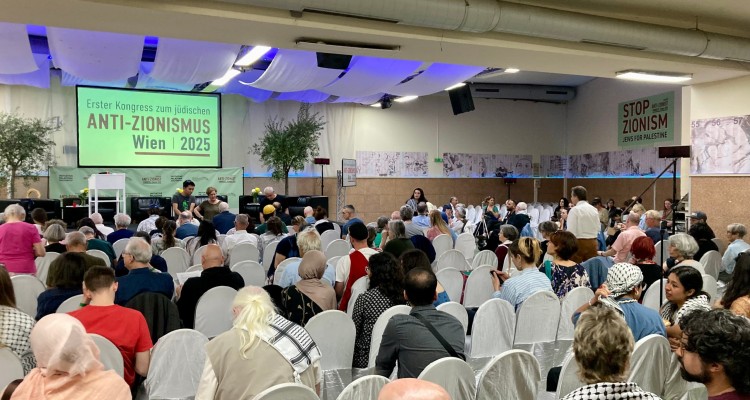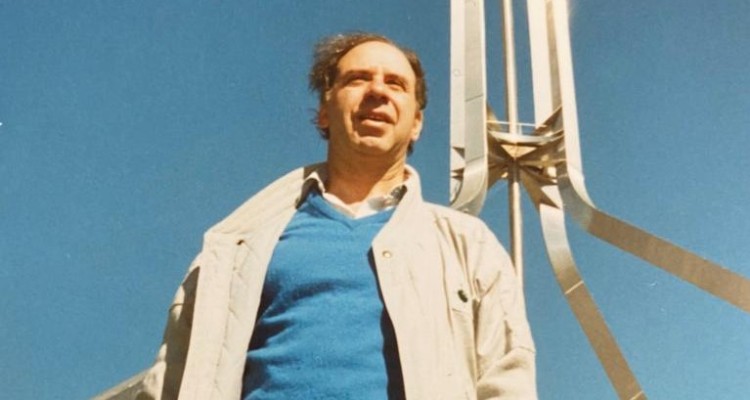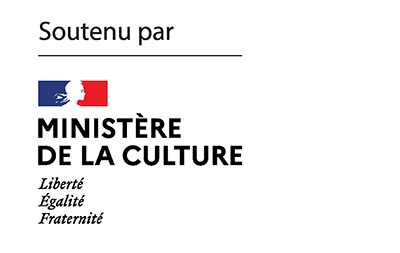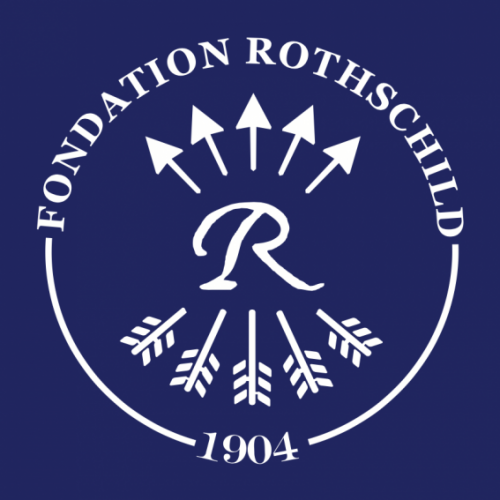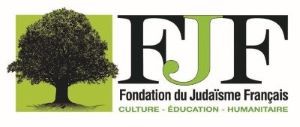In search of Sabbataï Zevi, his tomb, and above all his heritage, Benny Ziffer, Israeli journalist and author, invites us on a strange journey to the heart of the Balkans where the presence of the false Jewish messiah and the traces of Judaism continue to imperceptibly infuse the minds. Another way to visit Albania.
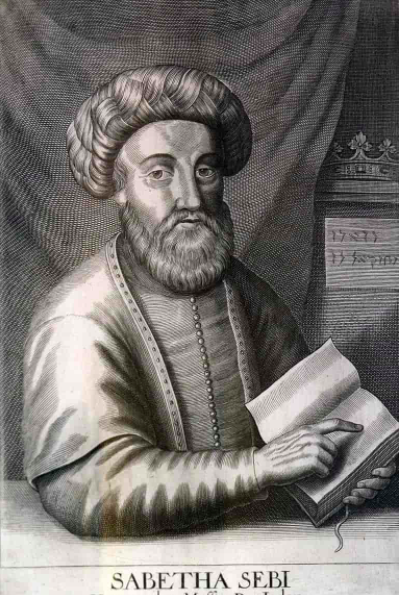
I cast my eyes up at the high wooden ceiling and see a painting of an upside-down paradise. A green field crisscrossed by canals of golden water, a golden fountain in the center and around it depictions of flowerbeds and fruits. Below the ceiling, around the perimeter, is a latticed gallery, and below that panels decorated with paintings of imaginary dream cities, and a strip with the 99 names of Allah encircling the entire space. Under that come wooden doors painted with flowers in the colors of joy, which open into cells of seclusion. Everything is bathed in a soft light which enters through large stained-glass windows, between the decorated ceiling and the strip, in all the splendid colors of the rainbow.
I am in the city of Berat on the banks of the River Osum in south-central Albania. The building I’m visiting, and whose ceiling I am straining to see, is a tekke, or gathering place, of the Bektashi Sufi order, a mystical Muslim sect whose world center is in Albania. But what brought me here is not necessarily what’s on the ceiling of the building but what’s hidden beneath the floor. It’s here – according to one local tradition, although it is a matter of dispute – that the body of Sabbatai Zevi, the self-styled Jewish messiah who converted to Islam, was interred, after his death in 1676. That was a decade after he chose conversion over decapitation – the two choices supposedly given him by the Turkish sultan – and was sent to what was then a remote province of the Ottoman Empire.
I had long wanted to visit this city, in whose lanes Sabbatai Zevi may well have walked, in whose mosques he prayed and in whose Bektashi tekke he would surely have joined the local community of mystics. And now that I’m here, I understand him completely. I have no doubt that had I lived in his generation I would have converted to Islam along with him and followed him into Albanian exile. Of an evening, over a glass of raki on the banks of the foaming river, we would have sighed and agreed that it had all been worth it just to finally arrive in this blessed region, whose tolerant residents accept with a shrug of the shoulders every religion and creed, and don’t care if you uphold two or three religions simultaneously.
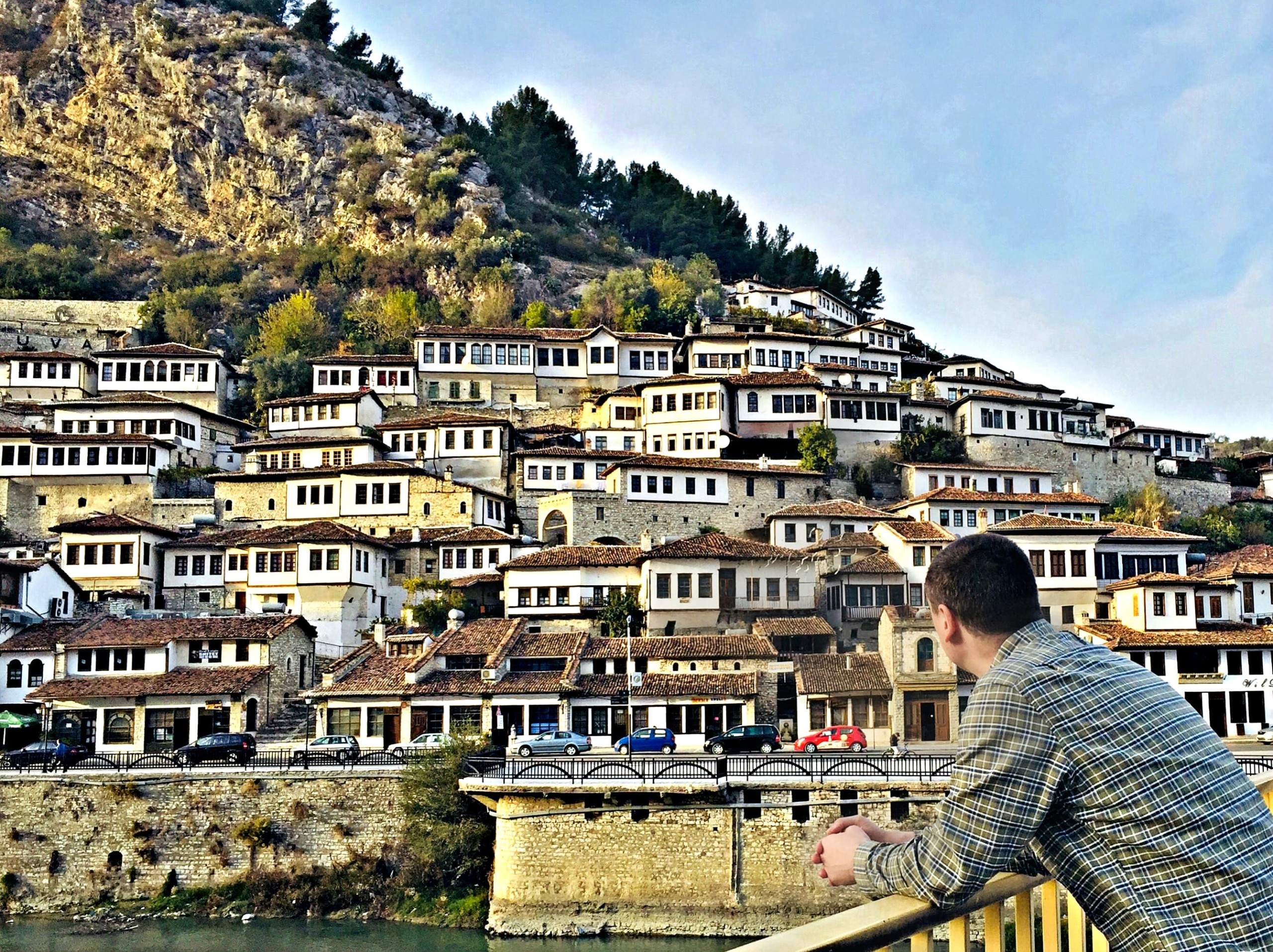
Is it because the Albanians grew tired of religion in general and of Islam in particular, and have no interest in the tombs of messiahs from the past, that the tekke was overlooked in 2008, when Berat was declared a UNESCO World Heritage Site and underwent elaborate restoration? Possibly. But more recently that wrong has been righted: The tekke was restored and brought back to life, down to the last of its original details, including two Stars of David carved in stone that greet the visitor at the entrance.
“Until three years ago, everything here was very neglected,” I’m told by Koran – the name of the tekke’s security guard – but then salvation arrived. It took the form of a special delegation of artists and other experts from the Turkish Cooperation and Coordination Agency, a government body with many resources at its disposal, which received the go-ahead from President Recep Tayyip Erdogan to restore Turkey’s glory in the world, and to restore and renovate Ottoman heritage sites everywhere. Not long ago, the house where Sabbatai Zevi was born, in Izmir, was magnificently restored, and now the turn had come of his conjectured grave in Berat.
If only I’d been able to tell this to my friend Sevin Gerçel. She was a member of the Dönmeh, the crypto-Jewish Sabbatean community of Jews whose first followers converted to Islam in the 17th century in the wake of Sabbatai Zevi. Outwardly the Dönmeh behave like Muslims, but inwardly they continue to believe in the coming of the Messiah, namely Sabbatai Zevi. Sevin never got to realize her Sabbateanism publicly, and when I told her that for years I had wanted to visit Sabbatai Zevi’s burial place, she said: Go there for me. She died this year, in Istanbul, after falling ill with COVID-19, and I fulfilled her wish in her place.
So I’m standing in the tekke of the Bektashi order, also called the Halveti Brotherhood, having a hard time taking my eyes off the ceiling, when suddenly I feel deeply moved because I realize I’ve already seen these designs of flowers and fruits. And I even remember where: in the illustrations for a Tu Bishvat seder in the Sabbatean sect that the children of my friend Sevin – who were fed up with the secrecy imposed on that group – showed me. Yes, the Sabbateans have a special Haggadah of their own, which sets forth the rules of Jewish Arbor Day, which they call Rosh Hashanah La’Ilan, ilan being the Hebrew for “tree” – as Sabbatai Zevi himself was called.
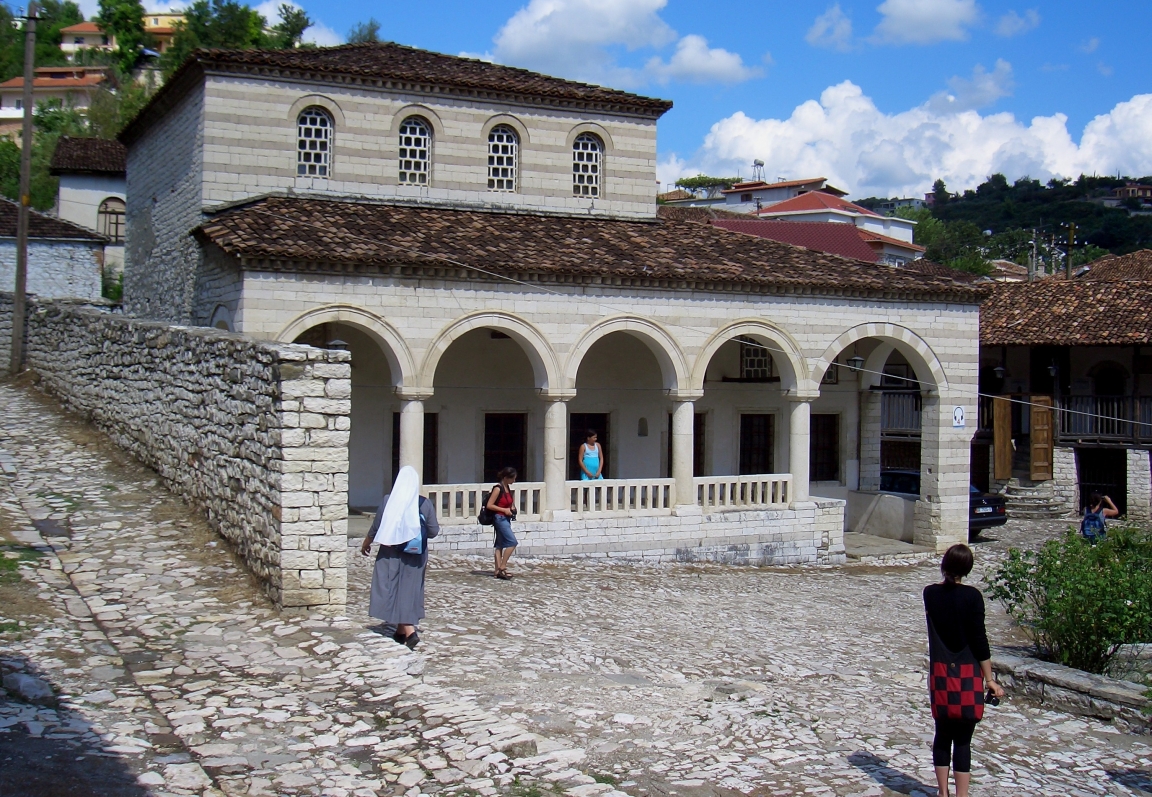
It will be readily apparent that in the debate over the place of burial of Sabbatai Zevi – whether in Ulcinj, a town in Montenegro, as Wikipedia has it, or in Berat, Albania – my vote is for Berat. One reason is that in Ulcinj every effort is made to persuade you that Sabbatai Zevi is buried there, and they show you a Muslim headstone that could be someone else’s. Whereas in Berat no one cares who’s buried where. You want it to be Sabbatai Zevi? Fine. Who’s buried here, I ask Koran next to a headstone in the tekke’s courtyard. “Someone important,” he replies.
Untold rescue stories
I’d arrived in Berat a few hours earlier, convinced that I would return to Tirana, the capital, that same evening. But Marius, who’s in charge of culture at Berat’s city hall, was waiting for me with an offer from the mayor, Ervin Demo, that couldn’t be refused: to spend the night in an Ottoman-style boutique hotel in the Mangalem neighborhood, and to meet with him the following morning. And in the meantime, Marius suggested, he himself would take me on a tour of the city’s alleyways.
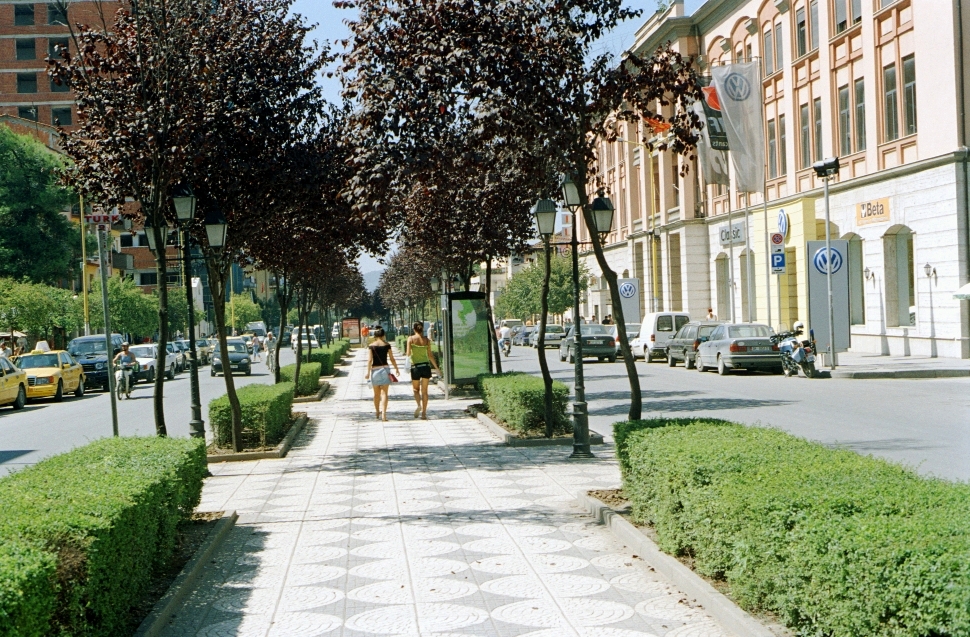
Evening was about to fall. At this hour, the cliff on which looms a line of fortifications of the ancient citadel, darkens. The remains of the light illuminate the white facades of the Ottoman-era houses deployed on terraces on the two hills in the center of the city, by the river. To the right is the Christian Bulgarian neighborhood of Gorica; to the left, the Muslim Turkish neighborhood of Mangalem. Marius led me to a square opposite the Old City, where there is a small Jewish museum; across from it is a mosque dedicated to the beneficent Ottoman sultan, Bayezid II, who offered asylum to the Jews when they were expelled from Spain in 1492.
Hundreds of years later, in the Holocaust, when Albania was occupied, first by Italy and then by Nazi Germany, the Albanian people gave refuge to Jews, acting out of a sense of duty and honor, with hundreds of tale of rescue remaining untold up until this very day. Israel sent Albania generous assistance after the serious earthquake that struck the country a year ago, and thus went some way toward repaying its people for their heroism and sacrifice. Since then the words “Israel” and “Bibi” (the Israeli prime minister’s nickname) have acquired a mystical aura here, and the name of Israel’s ambassador, Noah Gal Gendler, is also uttered with reverence.
Consequently, it didn’t take me long to feel at home here three times over: as an Israeli, as a Jew and as a Turk. And one additional time – as someone who’s enchanted by the tolerance of mystical Islam overall and by the Bektashi order in particular.
The Bektashis are a branch of Shi’a Islam that has, according to its world leader, Baba Mondi (Edmond Brahimaj), 150 million believers. “They were reputed to be Muslims in outward appearance only, and to practice among themselves libertinism and the ‘freedom’ of the children of the spirit,” wrote Gershom Scholem, the great scholar of Sabbateanism. Scholem maintained that Sabbatai Zevi was deeply influenced by the Bektashi community; after all, the Sufi sect practices their mystical rites in secret, as do Sabbateans, but act in everyday life as regular Muslims. Indeed, in a letter Sabbatai Zevi wrote from Albania in marvelous Hebrew in 1673, seven years after converting to Islam himself, he instructed his believers: “Chop off utterly the branches of that faith till nothing remains buried in your hearts but the root alone… Bury this my very great faith.”
Isn’t it logical, then, to accept the local notion that the body of Sabbatai Zevi was indeed interred beneath the floor of the Bektashi tekke after his death in 1676?
The person who could perhaps answer that question for me is Baba Mondi, who in fact was my next destination for the following day, after my return to Tirana. Back in the capital, the memory of the ancient splendor of Berat soon became a blur. The center of Tirana, known as “Block,” consists of apartment buildings in the spirit of former Soviet luxury. It looks amazingly similar to the Arlosoroff-Ibn Gabirol quadrangle in Tel Aviv, with one difference: Tel Aviv has no monument comparable to the impressive statue of the warrior Skanderbeg in the square that bears his name in the center of Tirana. Skanderbeg liberated Albania from the hands of the Turks in the 15th century, and his statue is situated symbolically between the Ottoman Et’hem Mosque and the opera house and the national museum.
As one moves away from the monumental center, the cityscape becomes ever gloomier. For a long time we crawled through what appeared to be poverty stricken neighborhoods on the outskirts of Tirana on our way to the shrine of the world leader of the Bektashi order. Even Waze got confused a few times before we reached the turn to a gate behind which loomed the shrine, surrounded by another Garden of Eden of tranquil roses and cypresses and glistening marble tiles, against the background of a verdant plain stretching to the foot of the Dajti, the mountain that overlooks the capital. A dervish led me to the throne room, where the Baba awaited me, with a long white beard and attired in a long white robe with gold embroidery.
I’d already met the Baba before. That was 15 years ago, when he was a guest of the Herzliya Artists’ Residence, directed by the poet Varda Ginosar. Albania had then barely shaken off 50 years of a murderous communist dictatorship. In the dimly lit hall appeared a man wearing a conical green hat of a dervish, while by his side musicians played doleful Turkish melodies. The Bektashis, he said, contrary to other Muslims, permit the drinking of wine and also allow coed worship, and an understanding of the principles of Bektashism is arrived at in part through jokes. On that occasion he shared one with us:
“An imam is preaching in the mosque about the evils of alcohol and asks the believers: If you hold a pail of water and a pail of raki in front of a donkey, which will it drink? The water, the Bektashi replies. Indeed, the imam asserts. And why does he drink the water? Because he’s an ass, the Bektashi replies.” He then replied to a question from the audience: “Sabbatai Zevi was a Jewish dervish and a Muslim dervish and bridged between the two religions.”
Now, in memory of our meeting in Israel, and in memory of the donkey that didn’t drink raki, Baba Mondi seated me on the golden armchair next to him and commanded the dervish who was serving him to offer me a glass of raki. An interpreter, a woman, sat on the sofa next to us, bareheaded. Bektashi Islam does not require women to cover themselves in any special way. In contrast, the men who plan to become dervishes and enter into the secrets of the religion are required to practice abstinence from women.
The significance of the Baba’s garb intrigued me. The conical hat, called a taj, represents the spirit of prophecy. The long white robe, called a çefçil, symbolizes a shroud. I wondered.
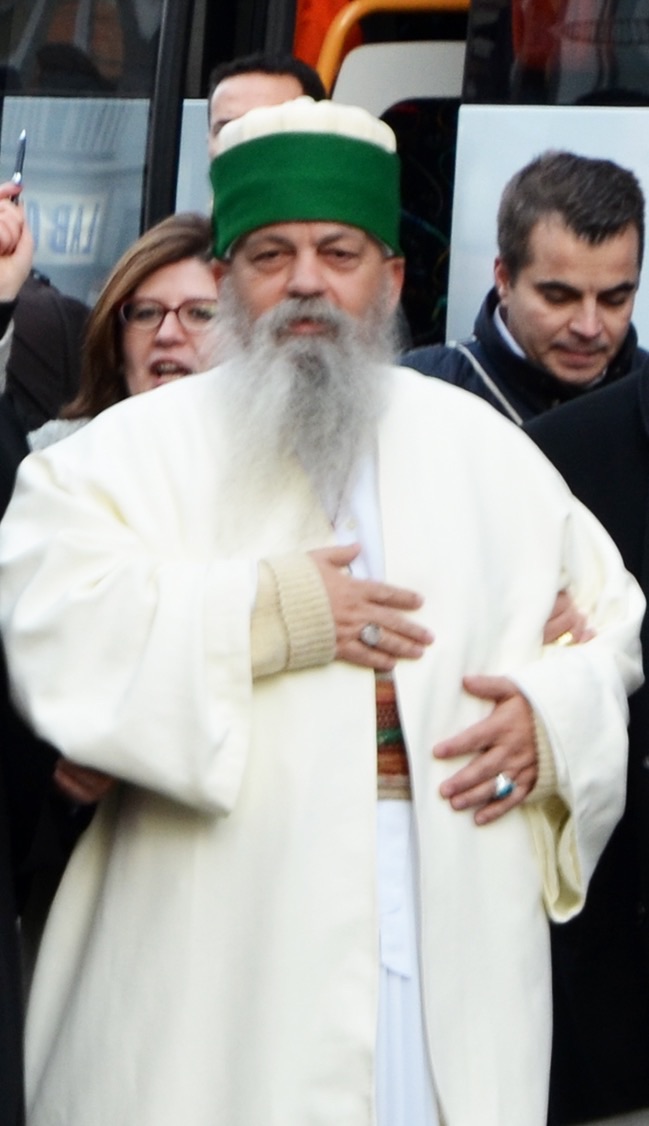
“Yes,” he said. “The color white comes to remind us of death. That we must do spiritual stocktaking with ourselves. On the belt, embroidered with gold threads, appear the name of the imam Ali and 12 stars expressing belief in the existence of 12 imams who are Mohammed’s successors. The 12th imam disappeared and is destined to return at the end of days.”
Baba Mondi glanced at his watch. Another interview awaited. He led me through the rose garden to the Bektashis’ museum and hastily explained several of the exhibits. The vast cauldron and the huge wooden spoons in it are used to prepare ashure, a pudding made from 10 types of grains, lentils and dried fruits, and eaten on the Ashura, which marks the murder of Hussein and Hassan, Ali’s sons, in the Battle of Karbala in 680 C.E.
I wanted him to tell me something about Sabbatai Zevi, maybe about his place of burial, but Baba Mondi had already been grabbed by a television interviewer and a crew of cameramen from TV Klan, a kind of equivalent of Israel’s commercial Channel 12, and he seemed irked that I’d taken up his time. I asked my dervish escort who the interviewer in the suit and tie was. “You don’t recognize him? It’s Blendi! Blendi Fevziu!” he replied, looking at me in amazement. I googled him. He is the author of a biography of the late dictator Enver Hoxha and other books, and hosts a highly popular current- events program called “Opinion.”
I too had another conversation waiting. At 2 P.M. I was scheduled to meet Tirana’s young and charismatic mayor, Erion Veliaj. “This is a city that by chance became a capital and swelled in breadth and in height in an ungainly way,” he admitted to me when I remarked that Tirana looked to me like Tel Aviv’s biological sister.
People are predicting that Veliaj will be Albania’s next prime minister. (The incumbent premier, Edi Rama, was also previously the mayor of Tirana.) Veliaj assumes an air of modesty when I mention that, but his whole demeanor bespeaks ambition. There is hardly any crime in his city, he emphasizes, in order to atone, and rightly so, for the dangerous image that has attached itself to his city and to post-communist Albania in general. And everyone is accepted, all the communities and religions live here peacefully.
Veliaj’s first motto is “Tirana is not Albania.” The second is “Don’t look back,” meaning to the horrific period of the communist dictatorship, which ended in the 1990s. “It’s like in the American apocalyptic thriller ‘Bird Box,’” he says. “It’s about a woman with two children who are supposed to cross a forest and a river blindfolded in order to avoid supernatural forces that make humans who see them commit suicide.”
Does “Don’t look back” also include the ease with which he is ready to raze the city’s rundown historic neighborhoods in order to build high-rises? When their residents demonstrated against the plan, he labeled them “cave people” who “don’t belong here” and “have no roots in the city.” Resoluteness and a quick riposte are the other side of Veliaj’s charisma. That’s also how he overcame those who opposed demolition of the national theater building in Tirana in favor of a “big” project: a vast structure in the shape of a white bow tie that is going to host theater groups in a framework of an entertainment complex. The mayor and his wife, Ajola, who make frequent appearances in the local gossip columns, are definitely images of the glorious future that Albania covets.
Echoes of torture
The past no one wants to look at looms large a few steps from Tirana’s City Hall in the form of the entrance to a bunker, one of the hundreds of thousands built during the brutal Hoxha dictatorship. Hoxha ruled for some 40 years after World War II until his death, in 1985. The bunkers were designed as protection against enemies who never arrived. This specific bunker, with its multiple subterranean burrows and corridors, was converted into a museum in memory of the victims of the communist regime and the terror inflicted on Albanians. Bunk’Art is the museum’s name, and according to Aurel, the mayor’s energetic assistant, who tells me proudly that he took courses at the University of Haifa, this is the site most visited by tourists in Tirana.
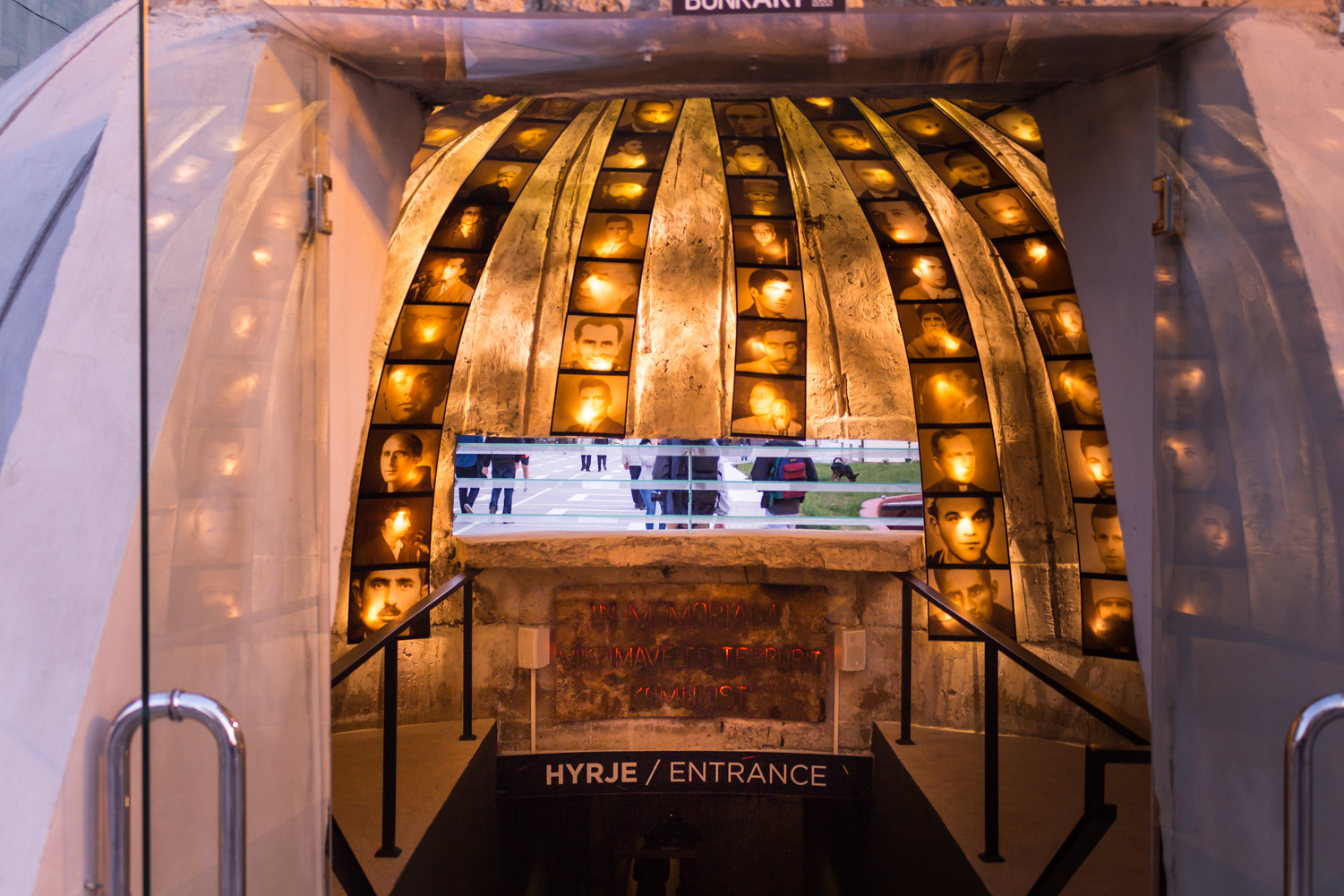
It was pouring rain when I emerged to the street from underground. Where could I take cover? In one of the elegant cafés abutting the patio of the opera house, where I would feel like an outsider among the men and women in business suits, who apparently couldn’t care less about COVID-19 restrictions? I fled into the museum of art opposite, which was empty at the time. I could hear my footsteps echo in the deserted halls. I passed Roman statues, Byzantine icons. In the corner is a display commemorating the woman who is a source of great pride in Albania – Mother Teresa: her prayer beads are on display along with a hymnal she dedicated to a monk named Joseph, with the words, “Be pure and modest as Mary, holy as Jesus.”
I looked for the washroom. The arrows led me mistakenly to a storeroom, where, along the wall in a row and heaped up in piles, were sculpted heads of Stalin. I opened another door, and afterward another one, and found myself in the backyard. There, a huge Stalin made of bronze in a military tunic extended an immense hand outward. An armless Lenin was nearby, and a small Enver Hoxha made of stone stood at their feet, broken-nosed.
The next day I discovered that the museum’s backyard borders on the palace of the Albanian crown prince, Leka II, that whenever he goes to the parking area of the royal residence he encounters the sculptures, and that he is already accustomed to their presence. On his wedding day, he even suggested placing bow ties on them so they could share his happiness. He also met the visitor from Israel. Beforehand I searched the web and asked people how one addresses a crown prince who does not actually serve as head of state. To say “Your majesty” and bow?
All my apprehensions faded when the door opened and a cordial young man of 38 entered the reception hall and immediately revealed himself to be a congenial conversationalist, so the need to address him with any sort of title didn’t arise. He immediately expressed his regret at not having visited Jerusalem, Tel Aviv or Bethlehem, and explained, in the wake of my question, that unlike other monarchs who have lost their thrones, the dynasty of which he is a descendant never gave up the monarchy. He functions as a ruler in exile who is entitled by law to form a government in exile, issue passports, award honorary titles and wait patiently for the day when he will be wanted again as king. During the years of the dictatorship in Albania, the prince recalled, the very act of keeping a picture of the king in one’s home was an offense that carried a penalty of 15 years in prison.
“And then the miracle of freedom happened,” he said. His father, Prince Leka I, who returned from exile when the dictatorship ended, tried his luck. He would easily have won the referendum on the return of the monarchy, my interlocutor continued, had the results not been rudely falsified by the socialist government that was in power at the time.
The prince is sitting on a sofa behind which is a huge portrait of his grandfather, King Zog I, on his wedding day. The two look so much alike! It was the grandfather’s misfortune to rule when Albania’s neighbor on the opposite shore of the Adriatic Sea was fascist Italy under Mussolini. Zog left Albania in 1939, when Italy invaded the country with large forces, and the king realized his fate was sealed. Only a year earlier, when he married one of the most beautiful women of the European aristocracy, Princess Geraldine of Hungary, his best man was the prime minister of Italy and Mussolini’s son- in-law. From Adolf Hitler Zog received a Mercedes-Benz 540K as a wedding gift.
He spoke to me with passion and love about Herman Bernstein, his grandfather’s closest adviser. Bernstein (1876-1935) was a Jewish-American journalist and activist, one of the great fighters against antisemitism in his time, author of a book titled “The Lie,” in which he exposed the malice behind the invented document called the “Protocols of the Elders of Zion.” He also published the secret correspondence between the Russian czar and the German emperor, which is studded with mutual agreements about the benefits of antisemitic incitement. Herman Bernstein became close to King Zog when he served as U.S. ambassador to Albania at the beginning of the 1930s, and their paths did not part until his death.
The prince also mentioned the Austrian-born British anthropologist Trude Scarlett Epstein, who toward the end of her life, in her final public appearance in 2011, said, “I owe my life to Albania.” Following Austria’s annexation to Nazi Germany, Albania was the only country that allowed her and her family to receive an entry visa, and from there, with the aid of a royal Albanian passport, they succeeded in reaching England.
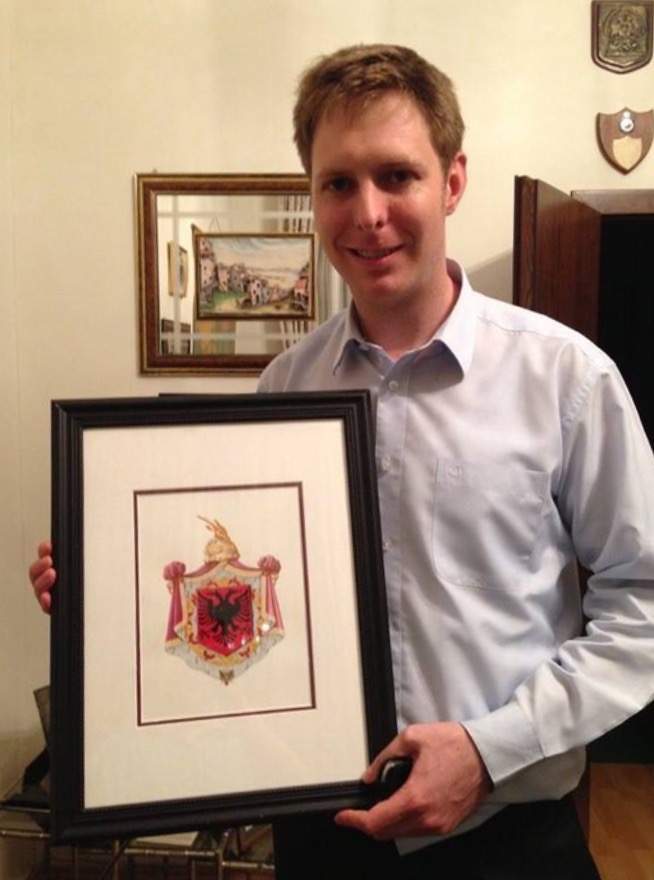
No, Leka doesn’t watch the Netflix series “The Crown,” about the British monarchy. He has, however, heard about it from his wife, Princess Ajola. “The story of your dynasty could furnish a fascinating series,” I venture. He doesn’t seem enthusiastic. Apparently one who was born a prince doesn’t need to be told fairy tales about princes. He’s much more interested in finding out about Sabbatai Zevi, about whom he heard from me for the first time.
Near-far shores
“If you don’t visit Gjirokaster, you haven’t really seen Albania,” the Israeli ambassador in the country, Noah Gal Gendler, urged me. “And on the way you must pass through Saranda, to see the ruins of the synagogue, one of the oldest in the world.”
At last I’m free to hit the road as I please. My driver’s name is Taulant, the same name as that of the ancient Illyrian tribe that peopled the region in ancient times. He turns out to be a walking encyclopedia of Albanian history, literature and food. He describes his homeland as “the land that God blessed, history rescued and the politicians wrecked.”
For Albanian-style roast lamb properly prepared in a black clay pot, Taulant was happy to make a detour of 50 kilometers and make the ascent to the Castle of Kruje. There, in front of a wood-burning fireplace, the kitchen of the restaurant snaps back into life, because there hasn’t been a foreign guest here since the start of the pandemic. So that it won’t end too quickly, I suggest that we stop for the night in Saranda. Ostensibly, because of the ancient synagogue that I promised the ambassador I would visit.
In the distance, from the boardwalk of Saranda at dusk, a dark lump seems to grow out of the sea. It’s the island of Corfu, it’s Greece already, Taulant says excitedly, and points to the glimmering lights on the opposite shore. During the 40 years of the communist dictatorship, Albanians came to this resort town just to be able to gaze at nearby Corfu and fantasize about escaping to freedom there. An elderly man approaches us and asks what we’re doing. I ask Taulant to find out from him why, during all the bad years, he didn’t flee from Albania. After all, you can even swim across from here.
“There was one person from the village who tried to escape like that and was caught,” the man replies. “He was tied to a car and dragged through the streets of the village until all that remained of him was a lump of bleeding flesh, and he was left like that on the ground for a few days.”
Early the next morning we arrive at the ruins of Saranda’s synagogue. The site is surrounded by tenement buildings, and the mosaic that adorned the floor has been moved to the nearby archaeological museum. It depicts the seven-branched menorah, next to which are an etrog (citrus) and a shofar. In a rare move, the communist authorities allowed archaeologists from the Hebrew University of Jerusalem to carry out the excavations.
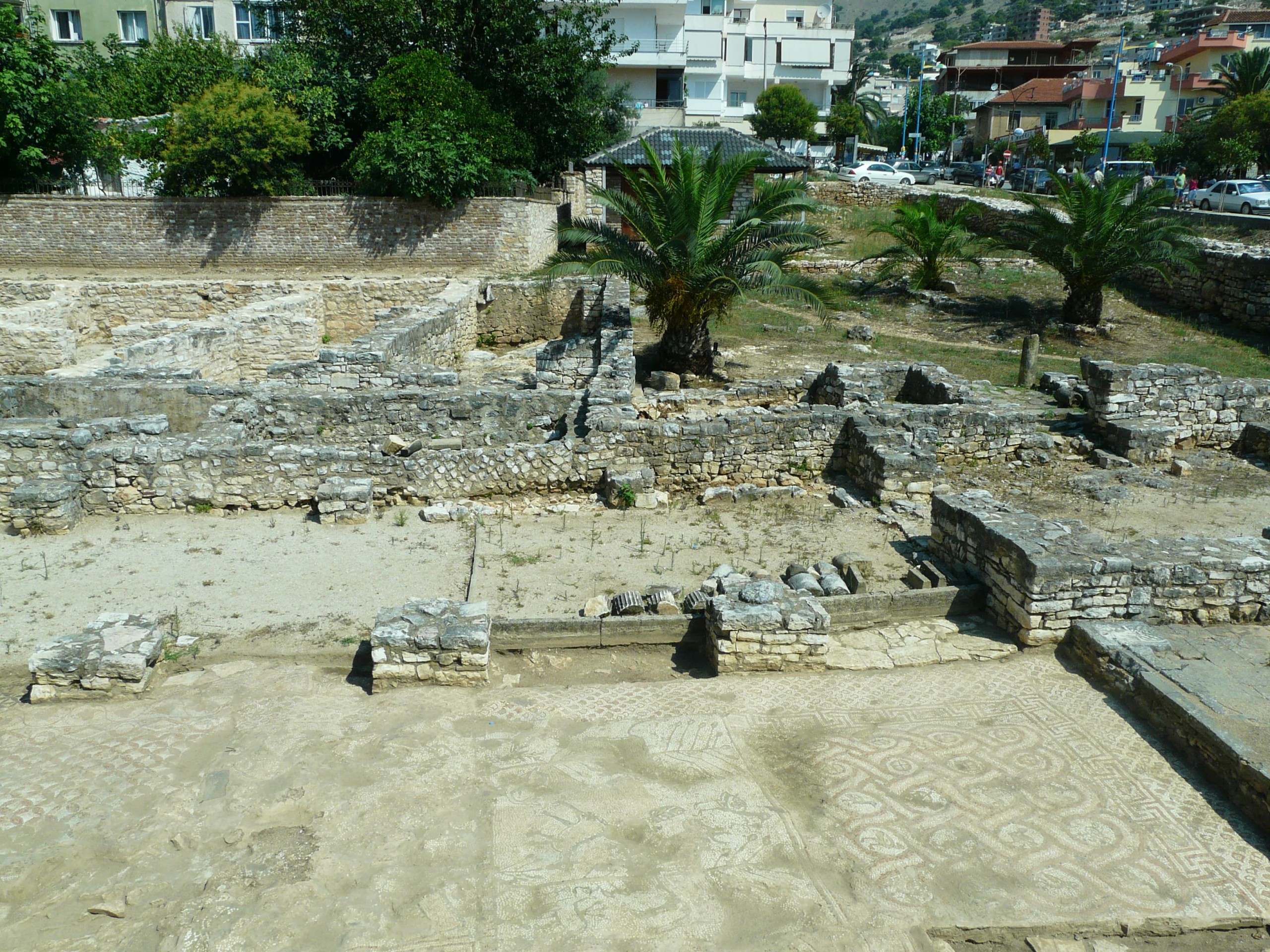
A man – maybe a guard, maybe a homeless person – emerges from the central part of the sanctuary. He’s hanging tattered rugs that got wet in the rain to dry. I glance inside. A filthy mattress and a desk on which are empty bags and packages. He gestures to me not to take pictures, places his hand on his heart to implore me. Maybe he thinks Enver Hoxha is still alive and might punish him for something.
Gjirokaster, the last stop. A large truck blocks the entrance to the city. From it a crane unloads a giant Christmas tree, which has arrived in four parts. Like Berat, this Ottoman city is also built on a hillside in terraces. Row upon row of two-story houses, the upper floor jutting out with latticed windows through which women in the past looked down into the street without being seen.
In Gjirokaster, two people whose fate is bound up with the fate of their country were born in two neighboring houses: the despot Enver Hoxha and the acclaimed Albanian writer Ismail Kadare, an opponent of the Hoxha dictatorship, who now lives in Paris. Hoxha’s house has been turned into an ethnographic museum. But the room in which he was born is still preserved as a heritage site, with his portrait above the fireplace, old hunting rifles hanging crossed on the wall amid woven rugs, mattresses piled up all around in the style of Ottoman village homes, and in the middle the round “barbecue” that served for heating and cooking alike.
The house in which Kadare was born, in 1936, has been renovated and restored beyond recognition. His books in translations into various languages are in two glass bookcases at the entrance. Some of the city’s lanes are named for characters from his novel “Chronicle in Stone,” which is set in Gjirokaster.
I heed the advice of the mayor of Tirana from a couple of days beforehand: “Don’t look back.” Because if you turn your gaze back you are liable to encounter monsters that make those who look at them want to die.
Benny Ziffer
Benny Ziffer is an Israeli author and journalist. He was born in Tel Aviv to a family that emigrated from Turkey to Israel in 1949. In 1988 he was appointed literary editor of the daily newspaper Haaretz. He is the author of three novels and has also translated French novels and poems into Hebrew.
